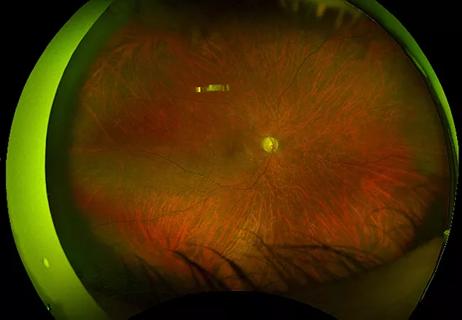Multiorgan involvement is the rule in vasculitis

Cleveland Clinic is a non-profit academic medical center. Advertising on our site helps support our mission. We do not endorse non-Cleveland Clinic products or services. Policy
A 19-year-old woman with a two-year history of granulomatosis with polyangiitis (Wegener’s) (GPA) presented to her clinic appointment with worsening dyspnea. On examination, she had audible stridor, raising the suspicion for subglottic stenosis.
She was immediately referred to the otolaryngology service, where a 30 percent subglottic narrowing was detected, although it was insufficient to explain her degree of dyspnea. After a CT angiogram was negative for lung infiltrates or evidence of pulmonary embolism, focus was placed on the endobronchial airways. She was taken to the operating room for direct laryngoscopy and bronchoscopy, which revealed the subglottic lesion and a high-grade narrowing of the right mainstem bronchus.
In the operating room she was attended by both otolaryngology and interventional pulmonology staff, who participated together in the airway assessment and intervention. The appearance of the inflamed airways was communicated back to the rheumatologist, who began medical management.
A 53-year-old man was seen for his first outpatient visit after having been diagnosed with microscopic polyangiitis two weeks earlier. He had experienced a fulminant presentation with pulmonary hemorrhage and glomerulonephritis with a peak creatinine of 5.3 mg/dL, and he had been started on treatment with cyclophosphamide and glucocorticoids.
On arrival to the clinic, he had markedly swollen legs, raising concern for a deep venous thrombosis (DVT). A vascular study was performed, which confirmed the presence of a large DVT. Vascular medicine staff were alerted to his diagnosis and, in discussion with his rheumatologist, jointly determined that initiation of anticoagulation was contraindicated in view of his recent hemorrhage. The vascular medicine specialists contacted interventional radiology staff, and an inferior vena cava filter was placed that afternoon.
While the above two patients presented with two very different concerns, they both had potentially life-threatening events that were recognized at a regularly scheduled outpatient visit where prompt multidisciplinary care held the key for optimizing diagnosis and management.
Almost all rheumatic diseases carry a predilection for systemic manifestations or complications. This need to consider the diversity of tissues and organ systems that can be impacted by these diseases is one of the aspects of rheumatology that draws physicians to our challenging and rewarding specialty. For the vasculitic diseases, multiorgan involvement is the rule, and disease- or treatment-related events can occur acutely and be complex.
Collaboration among colleagues who have specialized skills that they uniquely can contribute greatly enhances patients’ overall management. In vasculitis and rheumatology, these collaborations extend across the full spectrum of medical and surgical disciplines, diagnostic imaging, laboratory medicine and nursing.
At Cleveland Clinic, multidisciplinary care is at the heart of our mission to put patients first. Working together as a team enables us to do together what could not be accomplished individually in order to improve the care of our patients.
Dr. Langford is Director of the Center for Vasculitis Care and Research in Cleveland Clinic’s Department of Rheumatic and Immunologic Diseases.

Evidence-based therapies, monitoring, prevention and more

Holistic approach is necessary to ensure a correct diagnosis

Knowing the affected organs and vessels can help in identifying cause

When to consider the possibility of pulmonary artery involvement

When GCA initially presents without cranial symptoms

Relapses are frequent even with long periods of remission

Multidisciplinary management resolves complex case

Raising awareness of a common manifestation